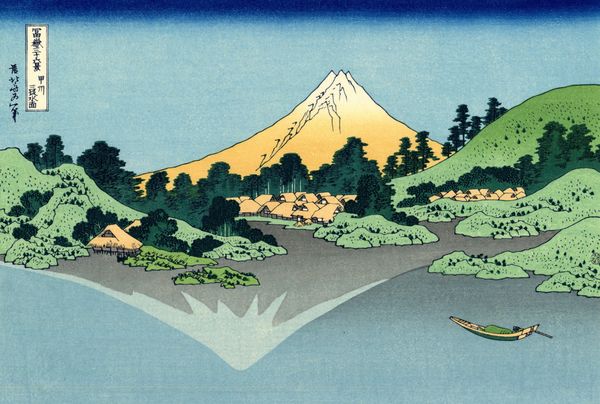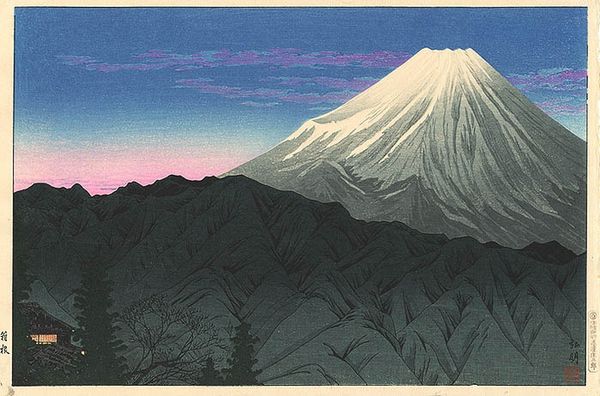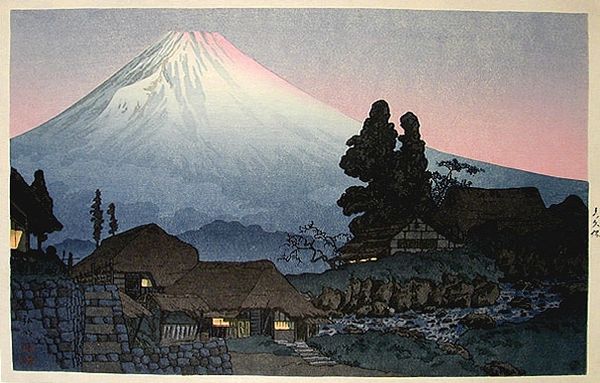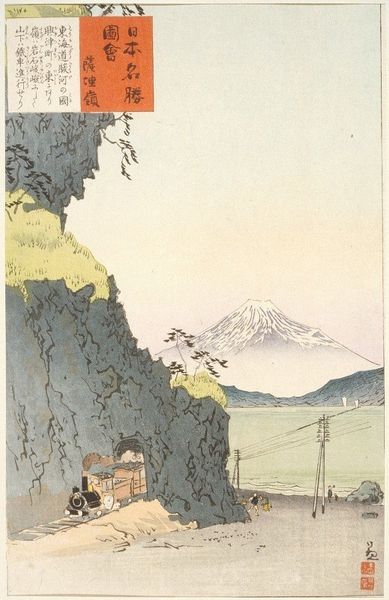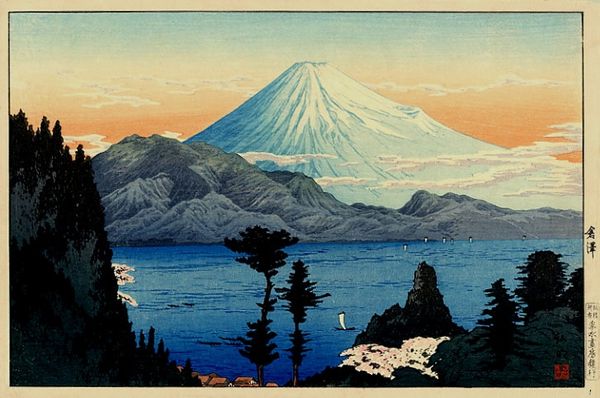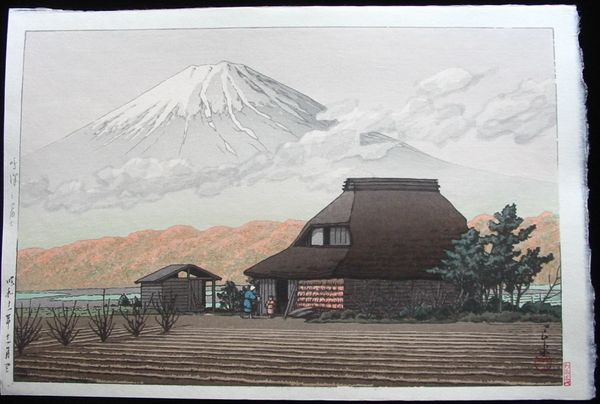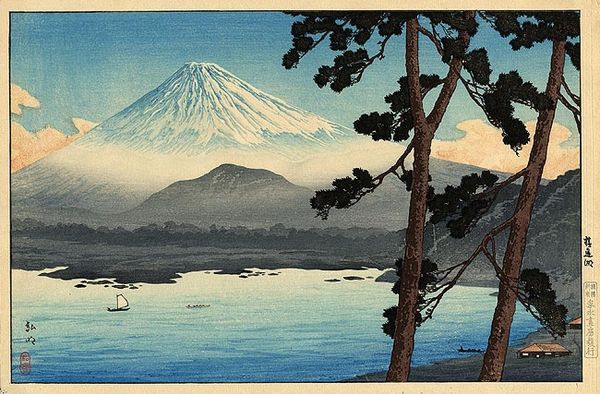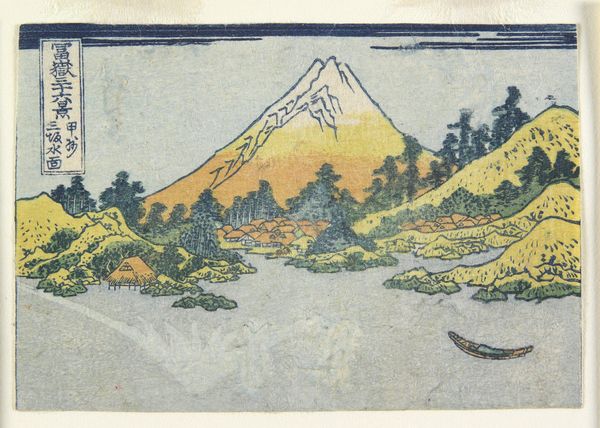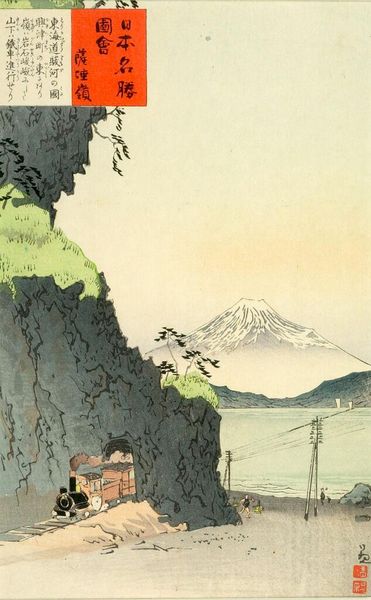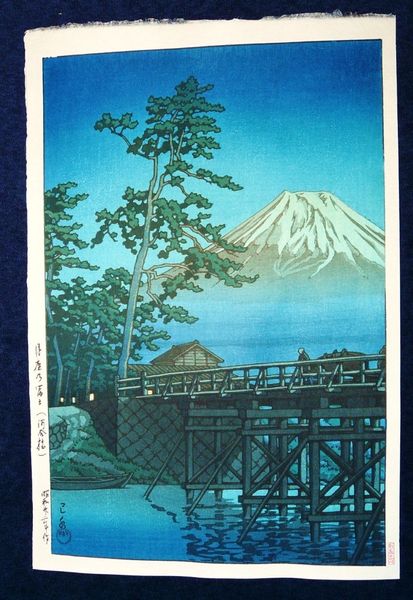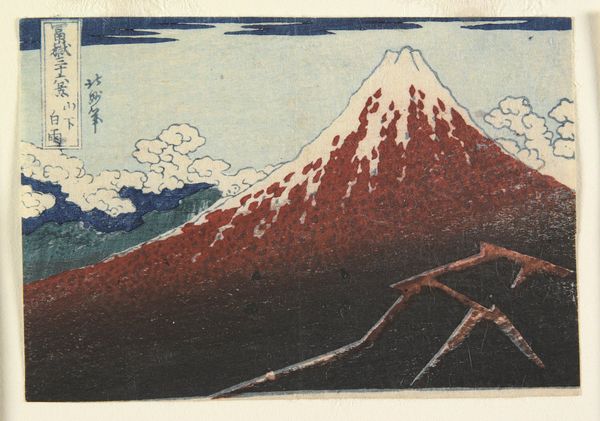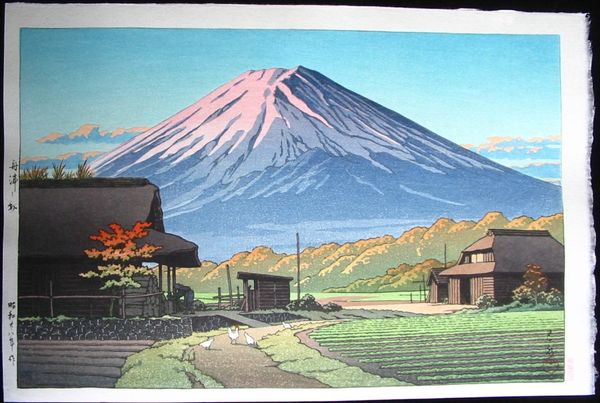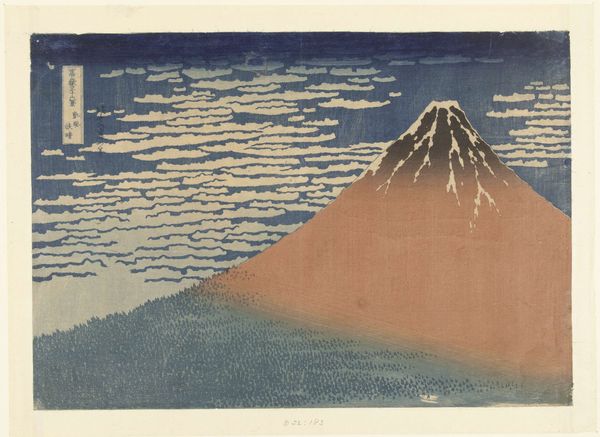
Copyright: Public domain Japan
Editor: Here we have Hasui Kawase's "Evening at Tagonoura" created in 1940, utilizing woodblock print and tempera. I find the framing of Mount Fuji through the trees really striking; there’s a calmness to the composition. How would you approach an interpretation of this piece? Curator: Well, let's think about the materials and the process. Ukiyo-e prints like this were a collaborative effort. Consider the labour involved – the artist, the block carver, the printer. This wasn't just Hasui's vision; it was shaped by the skill and interpretation of other artisans. And the widespread consumption of these prints; how does that speak to its value as art versus a commodity? Editor: That’s a side I didn't really consider – I was focused on the picturesque scene. How does the process of woodblock printing itself influence our understanding of the artwork? Curator: Mass production affects how it was received and understood, even as an object representing ‘high art,’ traditionally separate from 'craft'. Does this erode its status, or enhance it by making it accessible? Also, think about tempera. Tempera often requires careful layering. How does the use of tempera to provide vivid color interplay with the nature of a print, usually based around clearly delineated woodblock areas? It brings the idea of the “aura” of art into focus - the status assigned to originals or to single works of fine art. Here, in this printmaking tradition that often makes pieces much easier to reproduce, is aura less precious? Or, might not copies themselves be elevated closer to that ‘fine art’ space through skillful craftsmanship? Editor: I see what you mean; understanding the material processes opens up completely new interpretations! The value lies in its creation and accessibility, challenging conventional notions. Curator: Precisely. Looking beyond just the image, towards the labor, materials, and means of production reveals how this print navigates the boundary between art and commodity, between singular artistic vision and collective creation. What’s your understanding of the cultural context around landscape prints being made in 1940, then? Is there perhaps an elevated sense of commodity at play for something easily replicable as opposed to landscape painting with rarer techniques? Editor: Fascinating! Now I want to go and look closer at other landscape art of the period, thinking not just about how pretty it is, but the act of making the pieces as well! Thanks!
Comments
No comments
Be the first to comment and join the conversation on the ultimate creative platform.
